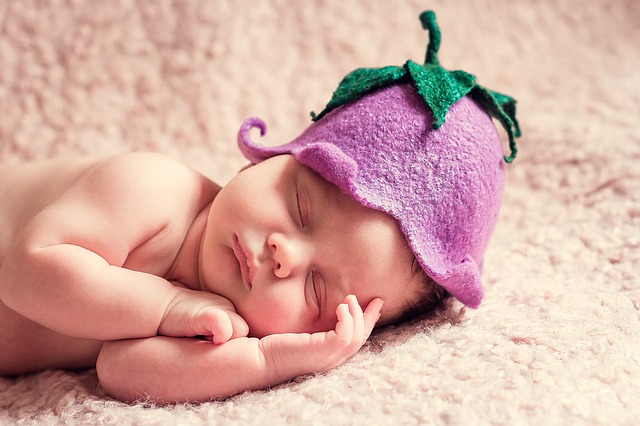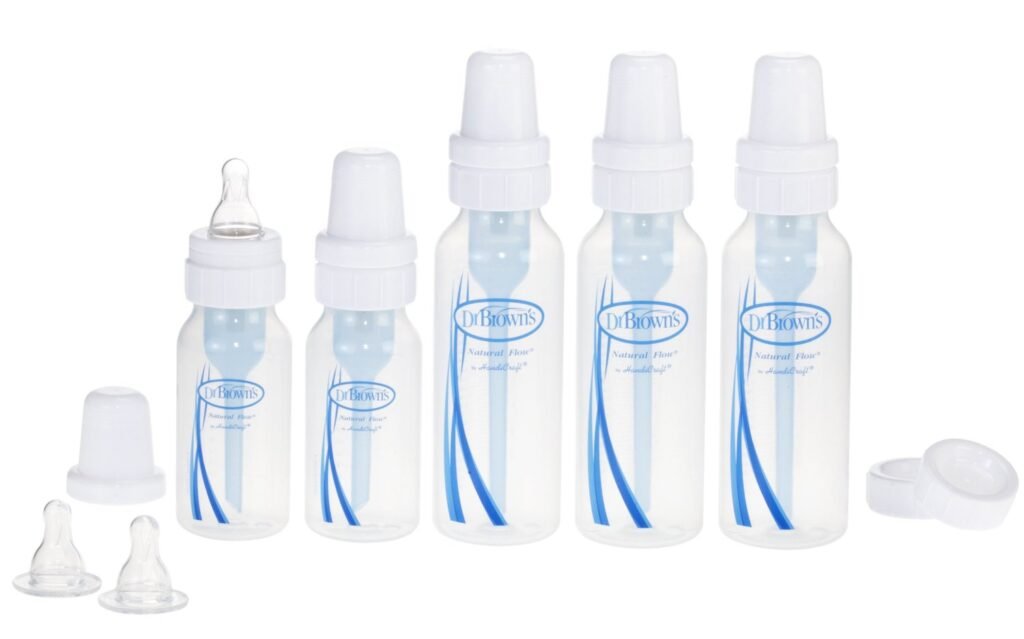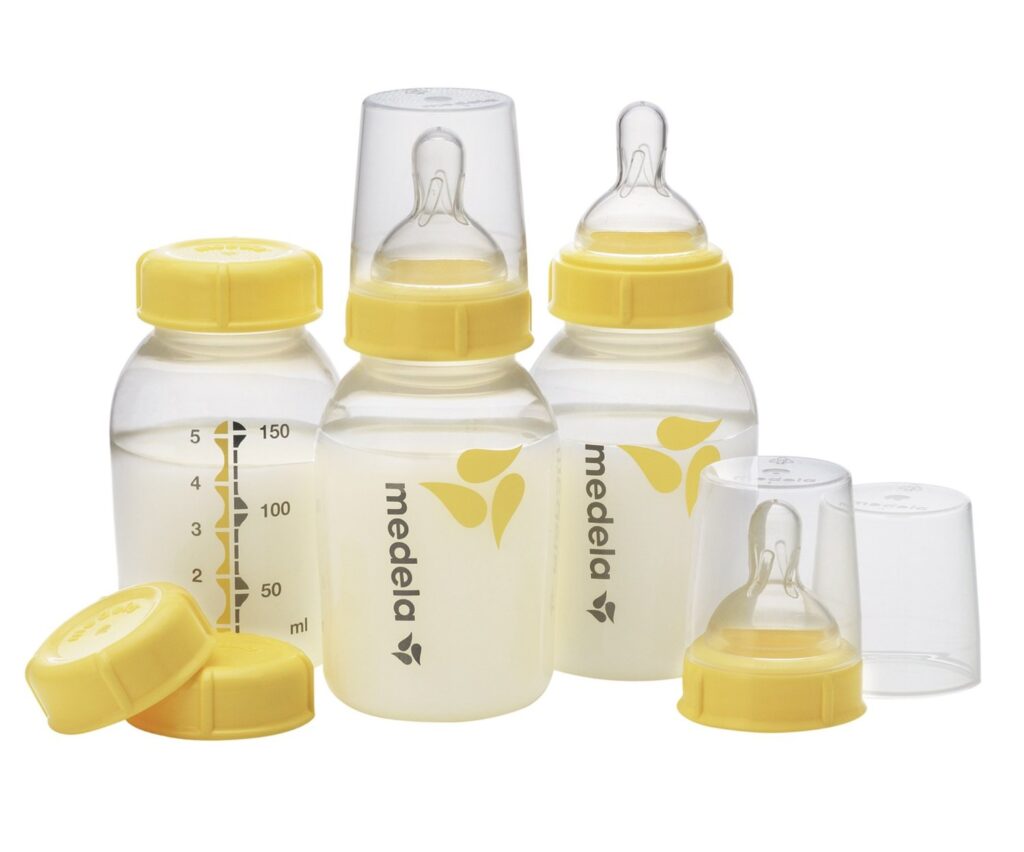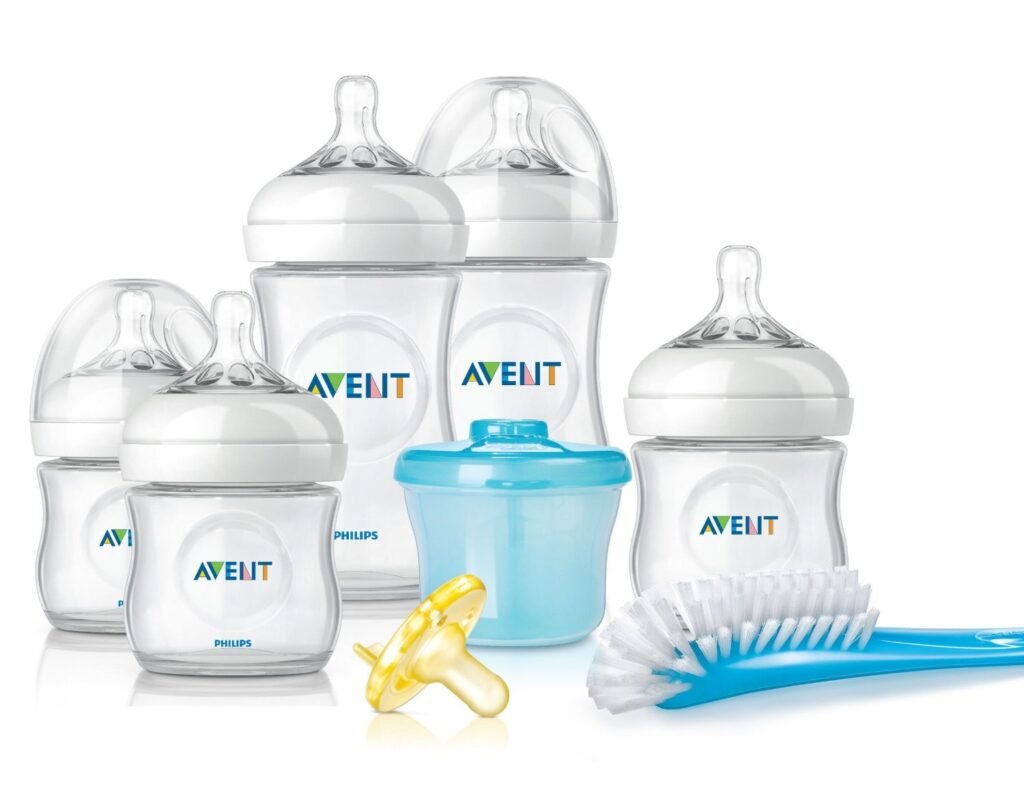5 Best Bottles For Breastfed Babies
As a mother, you always want the best for your baby. You know their little preferences, what makes them calm, and what puts a smile on their face. It is only natural to want the same level of care and quality when choosing the bottles they feed from.
- Why Get a Bottle?
- 3 Other Benefits of Using a Baby Bottle
- Transferring from the Breast to the Bottle
- 1. Dr. Browns Natural Flow Bottles
- 2. Pura Kiki Stainless Steel Infant Bottles
- 3. Lifefactory BPA-Free Glass Baby Bottles
- 4. Medela Breastmilk Bottles
- 5. Phillips AVENT Natural Baby Feeding Bottles
- Which Option Is Perfect for Your Baby?
- Conclusion
- Babies and Bottles FAQs
- What bottle nipples work best for breastfed babies?
- What bottle shape is most helpful for breastfed babies?
- Should bottles for breastfed babies have vents?
- What bottle materials are safest?
- What size bottle is best for newborns?
- How many bottles should you have on hand?
- What nipples encourage a natural latch?
- Should breastfed babies take bottles early on?
- How do you get a breastfed baby to take a bottle?
- How do you transition from bottle to breastfeeding?
Breast milk is the most nutritious and natural option for infants, but breastfeeding is not always convenient in every situation. Busy schedules, errands, or time away from home can make it necessary to pump and store milk for bottle-feeding.
That is why choosing the right bottle matters. The wrong bottle can cause nipple confusion, poor latching, colic symptoms, or frustration for both you and your baby. The right bottle supports a smooth transition between breast and bottle, minimizes gas, and keeps your breast milk safe from harmful chemicals.
Before you begin pumping and storing your milk, take time to choose bottles that are:
- Safe and free from chemical leaching
- Durable enough for daily use
- Ergonomically designed for your baby’s comfort
- Made with nipples that mimic natural breastfeeding
Up next, you will find five excellent bottles that work well for breastfed babies and make feeding time easier for everyone.
Why Get a Bottle?
Breastfeeding is the healthiest and most natural way to nourish your baby, but even the best things can come with challenges. Nursing in public is not always convenient. Whether you are on a plane, in the grocery store, at church, or attending an event, breastfeeding on the spot can feel stressful or impractical.
That does not mean breastfeeding becomes any less important. Nothing comforts and nourishes your little one the way you do. But when nursing isn’t possible in the moment, having expressed milk ready to go can make life dramatically easier.
Pumping and storing milk allows you to keep your baby happy anywhere. When hunger strikes in a checkout line, waiting room, or parking lot, a bottle of breast milk becomes an instant solution. No waiting, no stress, no hungry tears.
A bottle is simply a practical tool for:
- Feeding your baby when nursing isn’t feasible
- Reducing stress during errands and travel
- Ensuring your baby never has to wait when hunger hits
- Giving caregivers an easy way to help feed your baby
Why get a bottle? Because it keeps your baby nourished, calm, and comforted no matter where you are. Having breast milk on hand is one of the simplest, most helpful decisions you can make for your little one.
3 Other Benefits of Using a Baby Bottle

The list could go on and on for why baby bottles are such great little inventions. Besides convenience, they make feeding your baby a whole lot easier. Let’s take a look at three other important reasons to use bottles.
1.) Baby Bonding Time With Other Members of the Family
It’s always important for your loved ones to have “snuggle” time with the new addition to your growing family. It’s also really special for your spouse and other children to have that time together to bond. The whole family can experience the joy of feeding your baby by using a bottle.
It’s especially good for daddies to bond with their newborns by snuggling and feeding their new, precious little ones as well.
2.) Your Husband Can Alternate Feeding the Baby at Night So You Can That Extra Rest
Sometimes, getting enough sleep can be a challenge when you breastfeed. Particularly, this is true in the beginning months when it seems your baby needs to eat all the time. By expressing some breastmilk into a bottle, you can take turns with your spouse throughout the night to ensure you can get the extra sleep you need.
3.) Babies Still Need to Eat During Emergencies
It’s also a good idea to have bottles on hand in case of an emergency. You can stock up on breast milk and freeze it for whenever you may possibly need it. You can even begin freezing and storing small amounts of breast milk each time you pump to get a good inventory going. If you freeze the breastmilk, it can last in the freezer for up to 12 months.
So, in the case of an emergency, you or your baby’s caregiver will always have an abundant supply of breast milk. Unfortunately, emergencies happen, and you may sometimes need to leave your baby with a loved one for a while. Even though you may only need to leave for a short time, they can still benefit from your milk, albeit from a bottle.
Transferring from the Breast to the Bottle
Before you give your baby his or her first bottle, be sure that your milk supply is well established and breastfeeding is going smoothly.
- A bottle nipple is different than the breast, so it is important to know your baby has a good latch and is nursing comfortably before experimenting with a bottle nipple.
- The bottle nipple will require a different suction movement for your baby’s mouth, so it may take time for your baby to get used to the difference. Bottle feeding is not always easier in the beginning.
- Sometimes, your baby will not like the bottle; I know this from experience. I had to switch out different bottles until my baby was comfortable with the right one.
If your baby doesn’t like any particular bottle, it will be all the less likely they’ll eat enough. This is one of the reasons why it’s important to make sure you have the perfect bottle for your baby. Check out the below list of 5 of the best baby bottles available on the market today.
1. Dr. Browns Natural Flow Bottles

Dr. Brown’s Natural Flow bottles are easily one of the most popular bottles on the market today. Rated top seller on Amazon’s Baby Bottle List, Dr. Brown’s Natural Flow Bottles will prove themselves over and over again. Because of their innovative vent technology, Dr. Brown’s Natural Flow bottles provide a wonderful feeding experience for your baby.
You may be asking yourself, “What is this innovative vent technology”? Excellent question.
- This built-in vent prevents your baby from ingesting the air bubbles that arise as your baby drinks down the milk. As your baby feeds, the air is converted from the nipple collar to the vent system.
- From the vent, the air then travels to the rear of the bottle.
- This process prevents air from ever getting into your baby’s milk.
This fantastic vent technology can help prevent feeding problems such as colic, spit-ups, burping, and gas. And we all know that an air-free baby is a happy baby. The effectiveness of this innovative vent technology is one of the reasons this bottle made it onto our list.
Pros
- Innovative Vent Technology
- Helps Prevent Colic, Spit-Ups, Gas, and Burping
- 1# Best Seller on Amazon’s Baby Bottle List
- BPA, Phthalate, Latex, PVC, and Nitrosamine Free
- Dishwasher Safe
- Compatible With the Medela Breast Pump
Cons
- Plastic Bottle
- Some Parts are Potentially Difficult to Clean
This is an all-around great bottle. If you plan on expressing milk often and bottle-feeding your baby, this bottle is the one for you. Nobody wants their baby to have an upset tummy. So, do what you can to prevent that and try this bottle.
Knowing that you’re doing your best to help prevent your baby from having colic, gas, and spit-ups will provide you with great peace of mind. You want feeding time for your babies to be comfortable and trouble-free. This bottle will ensure that kind of ease and simplicity.
2. Pura Kiki Stainless Steel Infant Bottles

A stainless steel baby bottle? How cool is that! Not only is it cool and stylish, but it’s a great way to limit your baby’s exposure to plastics if that’s a concern for you. This is an absolutely awesome baby bottle. Better yet, it features a number of exciting colors. This bottle is 100% plastic-free and is very durable since it’s made of 100% stainless steel. It really doesn’t get much more durable than that!
Even though plastic baby bottles are BPA-free, there is some debate on whether or not plastic baby bottles are the healthiest option. So, it’s recommended to try out alternatives to plastic if possible. Unlike glass baby bottles, the Pura Kiki is very lightweight, easy to carry around, and won’t break. That makes this the perfect baby bottle to have with you when you’re on the go.
Whether you are hiking with your baby on a trail or taking a stroll down the street, the Pure Kiki Stainless Steel Baby Bottle is the safe and perfect choice for any outdoor activity because of its durability. This is probably my personal favorite due to its plastic-free construction and unbreakable durability.
Pros
- 100% Plastic-free
- 100% Stainless Steel Bottle and Collar
- Adaptable Sippy Cup Spout
- Easy to Sterilize and Wash
- 6 Different Stylish Color Options
Cons
- Not Dishwasher Safe
- Some Customers Noted Chipping Paint (Choose the Plain Stainless Steel Type to Avoid This)
- More Expensive Than Cheaper Plastic Alternatives
Not only will you feel good about a 100% plastic-free bottle, but the Pura Kiki is a very stylish bottle as well. You can choose from up to 6 different colors, all of which are bright and vibrant. Another promising feature is that you can purchase the adaptable sippy cup lid for continued use as your children grow older. The Pura Kiki is an exceptional bottle that you will absolutely love.
3. Lifefactory BPA-Free Glass Baby Bottles

The Lifefactory bottle is ideal for many great reasons, but the number one reason is that it is glass. This Bottle is a great healthy alternative to plastic baby bottles. If you want to try out a non-plastic alternative, Lifefactory’s glass bottles have proven to be exceptional for a lot of people.
These bottles also come with a protective silicone sleeve. The medical-grade silicone sleeve provides a non-slip grip and can help to protect against breaking. I’ve dropped bottles like these on the floor before. To my surprise, they didn’t break or shatter. Plus, you can change the sleeve if you want to change the color.
Pros
- Healthy Plastic Alternative
- Protective Non-Slip Grip Sleeve
- Changeable Color Option
- 3 Different Nipple Options
- Compatible With the Lifefactory Sippy Cup Lid
- Compatible with Most Breast Pumps
- Dishwasher Safe
Cons
- Breakable (though this hasn’t ever happened to me)
- Heavier Than Plastic Bottles
- More Expensive Than Cheaper Plastic Alternatives
I have used Lifefactory bottles for my kids and have absolutely loved them. It’s always reassuring there is a healthy alternative option to plastics. Give it a try, and you’ll be surprised by a really great baby bottle.
4. Medela Breastmilk Bottles

The Medela bottle is a great bottle to own because it connects directly to the Medela breast pump. This bottle also comes with storage lids that go right on top of the bottle when you have breastmilk ready to store.
It’s nice to be able to express the milk directly into the bottle and have the choice of storing it in the refrigerator or immediately feeding the milk to your little one. They also have measurements on their bottles so that you can know exactly how much your baby is feeding.
The Medela bottle is also great to travel with. Not only does it have storage lids, but it comes with a travel cap that keeps the nipple clean as well.
Pros
- Connects to Any Medela Breast Pump
- Comes With Storage Lids
- BPA-Free Construction
- Dishwasher Safe
- Includes Travel Caps
Cons
- Plastic Bottle
- No Anti-Colic Features
This bottle is a good option, especially if you already have the Medela breast pump. It simply screws on and off the breast pump, ensuring the ease of storing breastmilk in the same bottle. The only thing that this bottle has against it is that it is plastic and doesn’t contain any specific anti-colic/anti-air features.
Otherwise, this is a basic baby bottle that’s a great option to have with you whether you are at home or on the go.
5. Phillips AVENT Natural Baby Feeding Bottles

The Phillips AVENT bottle is on this list because of its natural breast-shaped nipple. I received this bottle as a gift for my first baby and was very pleased with the results. The bottle itself is easy to clean and comfortable to hold. It also is reasonably priced, and you can get them individually or in large sets.
Pros
- Wide Breast-Shaped Nipple for Latch-On Ease
- 6 Different Flow Style Nipples to Accommodate Your Growing Baby
- BPA-Free
- Comfortable, Easy Grip for Mommy and Baby
- Affordably Priced
- Dishwasher Safe
- Nipple Lid
Cons
- Plastic Bottle (They Also Make a Glass Alternative)
- Complaints of Leaking Bottles
Due to its breast-shaped nipple, this is a great bottle to start using with your baby before trying others. It may be easier to transition your baby from the breast to this bottle because of its natural shape. Phillips AVENT also makes a glass bottle that is compatible with the Natural Feeding nipples. If you don’t want a plastic bottle but still like the naturally shaped nipples, get the glass bottles they make instead.
Which Option Is Perfect for Your Baby?
It’s always crucial to know what your baby’s needs are so that you’re able to keep them comfortable and happy. A happy baby is a happy mommy! One of the five bottles we mentioned will be sure to keep you and your baby satisfied.
Not listed in any particular order
Keep in mind that our list wasn’t measured from best to worst since we aimed to list bottles that would appeal to a large variety of mothers with varying preferences and needs.
Baby preference is key
It’s also important to know that you can rely on a bottle that perfectly suits his or her individual demands.
- Babies are very particular, and no two babies are alike.
- Explore your options and try out different bottles until you find the one that your baby absolutely loves.
Some babies may prefer the natural nipples the Avent bottles have, but some babies may not like them. Or, perhaps you don’t want a plastic or glass bottle? Then the Pura Kiki is an excellent and durable stainless-steel choice for you.
Maybe you just want a basic bottle to start with that can be used with the Medela Breast Pump? Then, the Medela breastmilk bottles are a good choice for you.
Whatever the case, one of these top-rated bottles will meet every need and preference you have for you and your baby.
Conclusion
Figure out which kind of bottle is your baby’s favorite. While bottle feeding isn’t as good as breastfeeding, it is a great way for them to stay occupied and get a great meal. He or she might not be able to thank you in words, but you’ll know they’re happy when they begin peacefully sleeping with a satisfied tummy.
Feeling good about yourself is important when you know you’re giving your baby the perfect option. The importance of purchasing a quality, safe, and comfortable baby bottle is an integral part of your baby’s health and quality of life. Do not cut corners, don’t go for the cheapest options, and be willing to try various kinds of bottles until you find the perfect option.
Give yourself the confidence of knowing that the baby bottle your baby eats from is the very best option for them and their preferences.
Babies and Bottles FAQs
What bottle nipples work best for breastfed babies?
Slow-flow, breastlike nipples are best because they mimic the natural pace of nursing and help prevent flow preference. Brands like Philips Avent, Comotomo, and Dr. Brown’s offer shapes that closely resemble the breast. Every baby reacts differently, so expect a little trial and error. Remember, the bottle is simply a backup when nursing isn’t practical.
What bottle shape is most helpful for breastfed babies?
Bottles with a wide, rounded base and naturally shaped nipples tend to support a more natural latch. Options like Dr. Brown’s Wide-Neck, Avent Natural, and Comotomo are well-designed for breastfed babies. The goal is to mimic breastfeeding mechanics as closely as possible.
Should bottles for breastfed babies have vents?
Yes. Venting helps reduce swallowed air, which lowers the chances of gas, fussiness, colic, and tummy discomfort. If choosing between vented and non-vented bottles, vented is the better option for most babies.
What bottle materials are safest?
Safe, non-toxic materials include:
- Glass (durable, chemical-free, easy to sterilize)
- Stainless steel (nearly indestructible, lightweight, completely non-toxic)
- BPA-free plastic (lightweight and affordable)
Glass or stainless steel are the most durable long-term choices.
What size bottle is best for newborns?
A 4-ounce bottle is ideal for newborns up to around three months. After that, you can move to 8-ounce bottles. More important than size is maintaining appropriate feeding amounts and choosing a bottle that is convenient for you to pack, store, and clean.
How many bottles should you have on hand?
Most parents do well with 6 to 8 bottles, especially if pumping, working, or running frequent errands. This prevents constant washing and gives plenty of rotation throughout the day.
What nipples encourage a natural latch?
Wide, rounded silicone nipples that mimic the breast shape work best. Comotomo, Avent Natural, MAM, and Nanobébé are popular for supporting a natural oral posture and smoother breast-to-bottle transitions.
Should breastfed babies take bottles early on?
If you mostly breastfeed at home, you may not need bottles often. Many parents introduce a bottle when it becomes practically necessary. If you want your baby to be comfortable taking a bottle later, introducing one around 4–6 weeks (after breastfeeding is well-established) works well for many families.
How do you get a breastfed baby to take a bottle?
Try these helpful strategies:
- Offer a slow-flow newborn nipple
- Let someone other than Mom give the first few bottles
- Offer the bottle when the baby is calm, not starving
- Warm the milk and nipple to mimic nursing
- Take your time and stay relaxed
Some babies adapt immediately, others take a few tries—both are completely normal.
How do you transition from bottle to breastfeeding?
Gradually. If you started with bottle feeding, alternating breast, and bottle feeding during the day, don’t go longer than 4 hours without nursing. If you’re deciding which to choose from the beginning, choose to breastfeed; it’s the superior option when possible.


